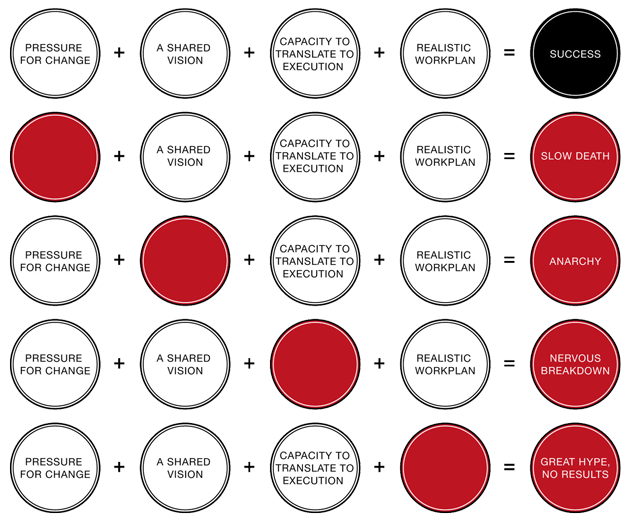More is possible for, and expected from, brands than ever before. The role of emotion in heightening the quality of connection has reached a tipping point, pushed over the edge by hyper segmentation, AI, demographic shifts, and ever-increasing competition.
Emotion and E-ROI will dominate brand strategies in 2025—and it’s mission-critical to understand the difference between them.
- Emotion is the energy that sparks connection—how a brand makes its audience feel.
- E-ROI (Emotional Return on Investment) is the measurable value brands gain when they successfully leverage emotion—turning connection into loyalty, brand equity, and revenue growth.
Emotion drives action. E-ROI measures impact. Brands looking to lead in 2025 must embrace both. Here’s how the emotional landscape is evolving and what it will take to win.
1. Emotional Personalization Will Fuel Authentic Engagement
By 2025, generic approaches will be dead on arrival. The brands that win hearts and market share will have outgrown personalization based on demographics or purchase history. Instead, they’ll own emotional personalization, using AI and emotional intelligence (EI) tools to anticipate and respond to customer values, desires, and real-time emotions.
Brands that embrace AI-powered personalization report 26x higher year-over-year revenue growth than their competitors.
Nike and IBM have led the charge, mining emotional data to craft stories and experiences that resonate with customers’ aspirations. The SNKRS app powers product customization while collecting customer insights that Nike uses to shape brand interactions, and IBM’s Watson customizes customer service responses based on mood and context cues.
In 2025, expect more brands to meet customers where they are—emotionally and situationally—making each interaction feel human and deeply personal.
2. Purpose-Driven Narratives Will Be Non-Negotiable
With Millennials and Gen Z holding the reins of purchasing power, demand for purpose-driven brands will intensify. Brands that tie their purpose to real societal change will earn the highest E-ROI. Social impact won’t be a bonus for consumers—it will be a core driver of emotional connection and brand loyalty.
Research shows that emotionally connected customers are twice as valuable as highly satisfied customers.
—Harvard Business Review
Brands like Allbirds and Patagonia have shown how purpose, when woven into every aspect of the business from sustainability efforts to employee culture, can drive both emotional engagement and financial growth.
By 2025, purpose will be the cost of entry.
3. Brands Will Balance Data with Emotional Intelligence (EI)
Data has been king for a decade, but 2025 will herald the rise of EI as a business asset. Brands will still rely on data, but with a more human lens that balances quantitative insights with the subtleties of emotions. Those who can decode emotional data will deliver experiences that feel intuitive and connected.
Companies ranked highly for emotional intelligence generate 20% more revenue growth and 18.3% higher share price increases.
—Capgemini
Brands from Dove to Salesforce are demonstrating the superpower of EI–from challenging beauty standards in ways that meet deep emotional needs, to detecting consumer preferences and sentiment with AI to tailor marketing strategies in real time.
Such strategies will reverberate across B2B and B2C markets throughout 2025, benefiting both companies and customers.
4. Emotion Will Drive Innovation
By 2025, emotion will influence more than just marketing—it will become central to product development, customer experience, and organizational culture. Brands will embed emotional intelligence in their innovation processes, ensuring new products resonate emotionally from the start, with responsiveness to needs as they evolve.
“We must make a product or service that delivers in the person the emotions we care about—it’s an art.”
—Don Norman, UX Design Pioneer
This shift is evident in Adobe’s creation of a community in which customer feedback drives product updates. Not only do customer concerns and input guide improvements, but the community has forged emotional ties resulting in more repeat buyers and less churn.
In 2025, this level of connectivity will no longer be exceptional, but expected.
5. Emotional Impact Metrics Will Define Success
As emotional impact takes center stage, traditional metrics like click-through rates and sales will no longer be enough to compete. Brands will need new KPIs focused on emotional connection, loyalty, and long-term brand affinity.
“The ability to recognize and use emotional data at scale is one of the biggest, most important opportunities for companies.”
—Deloitte
For leaders spearheading change, the ability to gauge emotion will determine outcomes of transformation programs. EY found that traditional KPIs are insufficient, lagging indicators, and that the behavior and emotions of the people are better predictors of whether a transformation program is on track.
In 2025, internal and external initiatives will lean on emotion-driven metrics that precede, and therefore can help guide and realize, business impact.
E-ROI: The New Currency of Brand Success
The ascent of E-ROI in 2025 represents tantalizing opportunity–and potential peril. Brands that fail to invest in emotion as a strategic asset will fall behind. Those that tune into emotion will not only move their organizations forward, but also entire markets and even movements.
Visibility and functionality are now table stakes. To lead, brands must evoke, engage, and elevate every interaction with emotion as a catalyst for connection. The meaningful and enduring impacts they create for their audiences will translate into transformation, innovation, and growth for their businesses.
Leading in 2025 means leading with feeling.

















